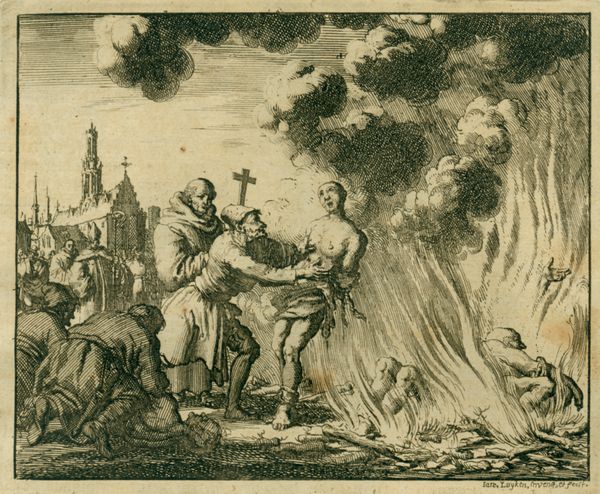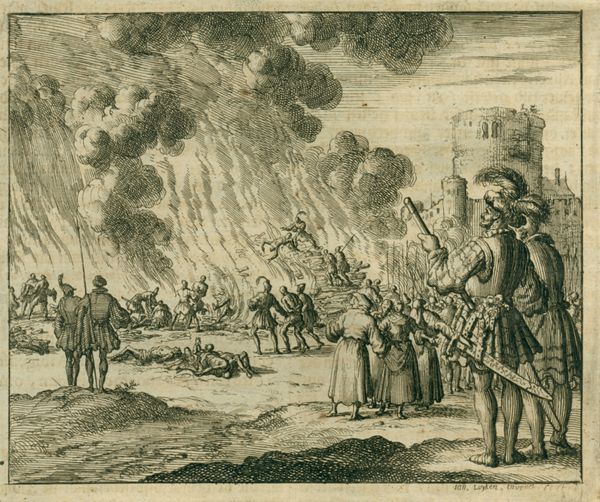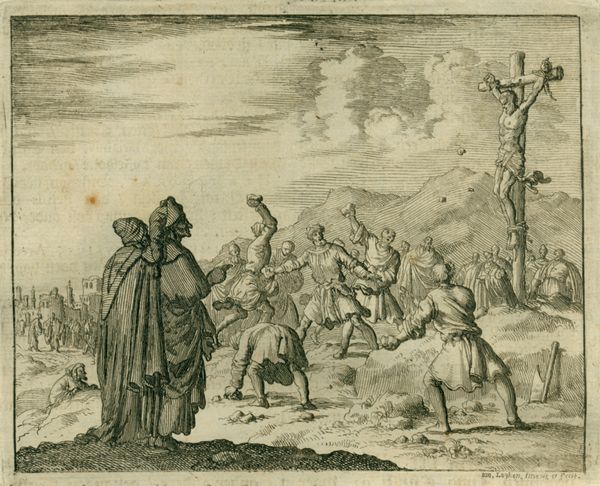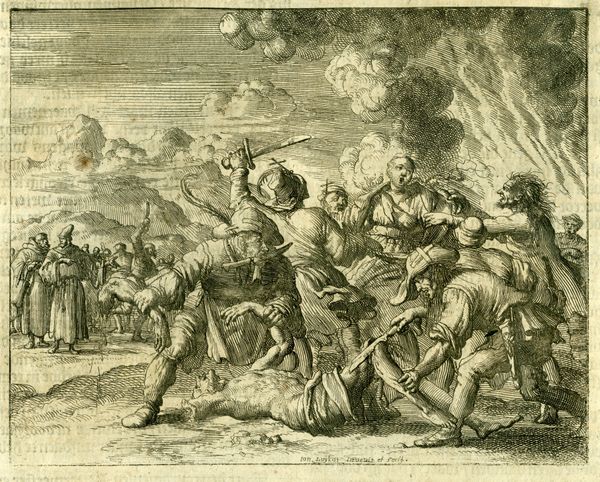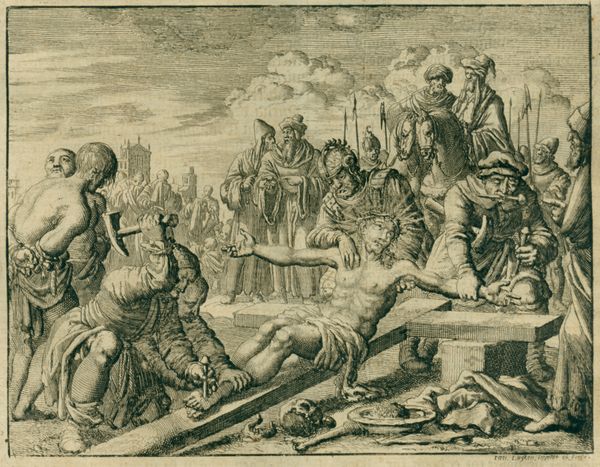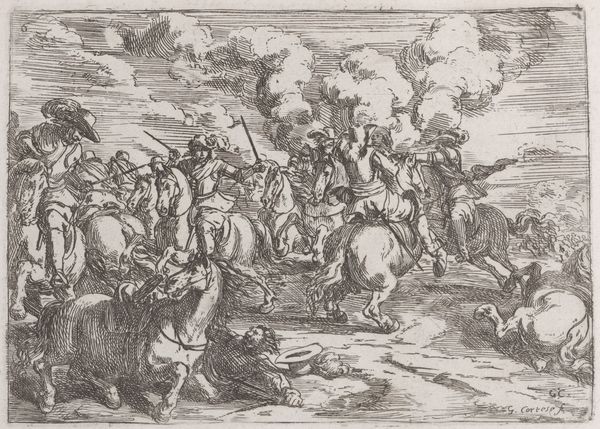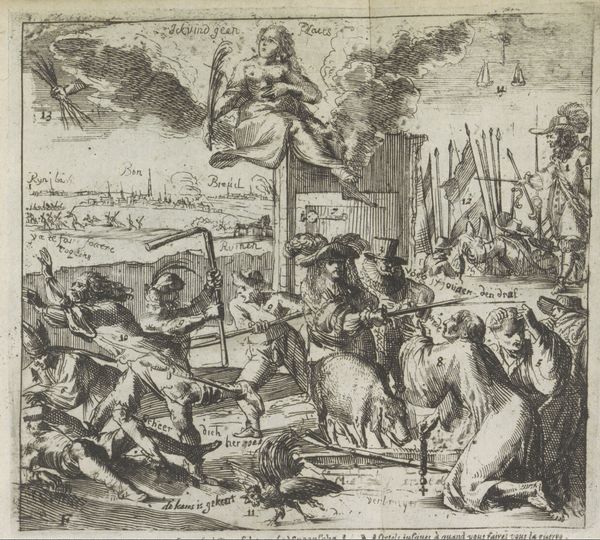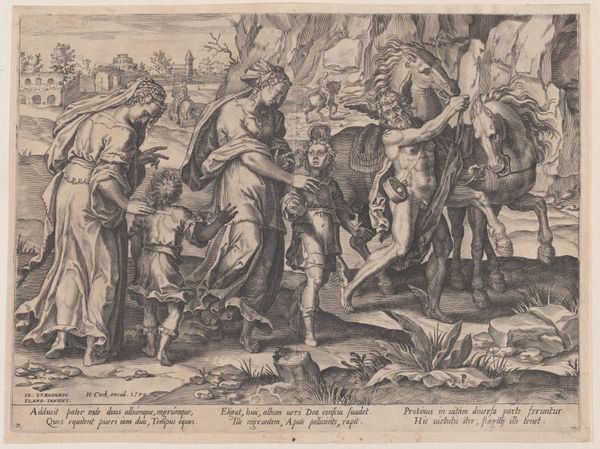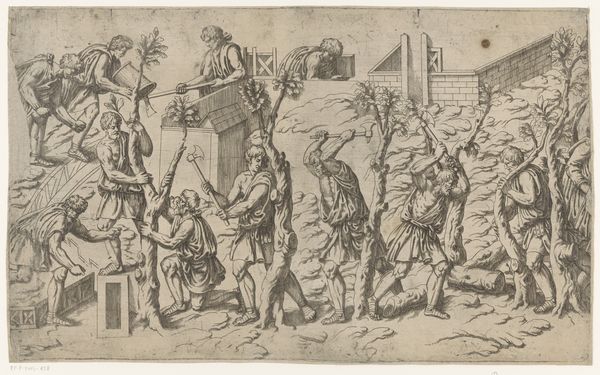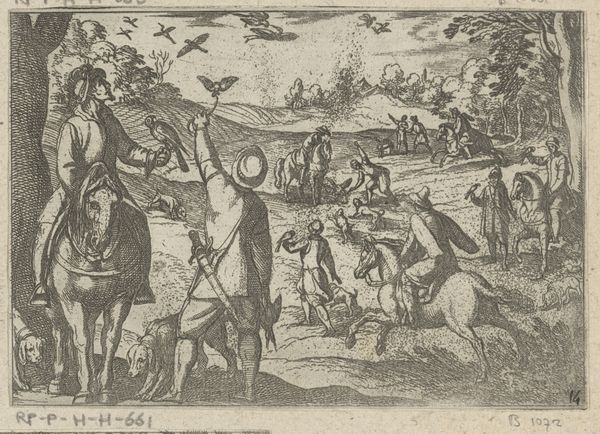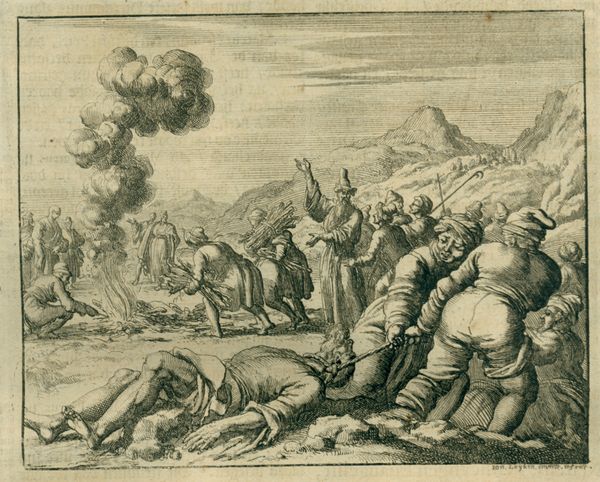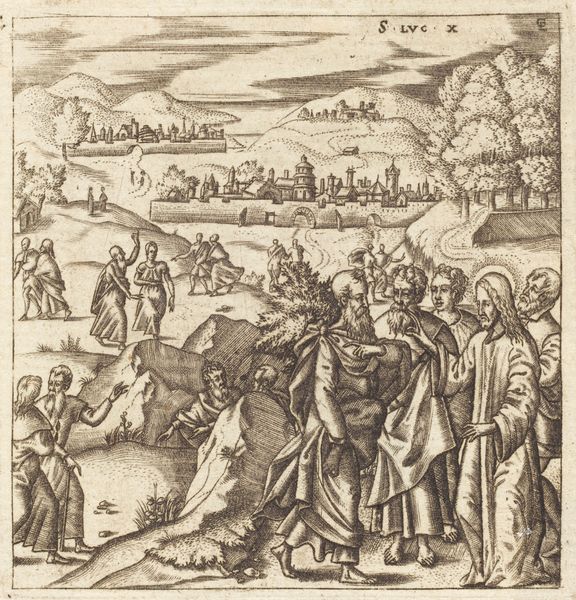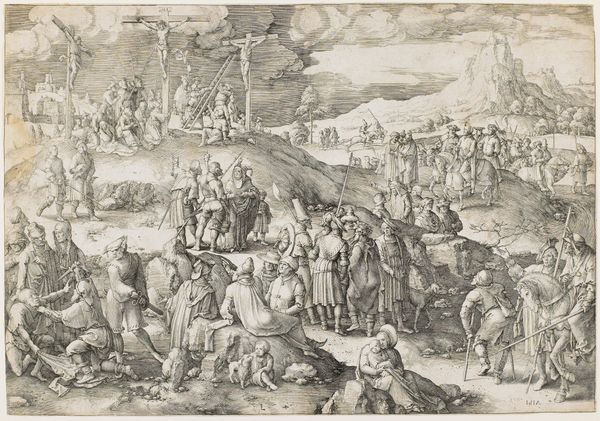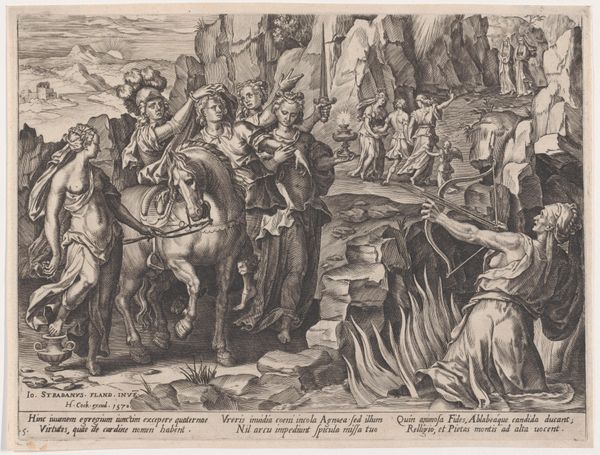
print, engraving
#
narrative-art
#
baroque
#
ink painting
# print
#
charcoal drawing
#
watercolour illustration
#
history-painting
#
engraving
#
watercolor
Copyright: Public domain
Curator: Welcome. Before us hangs Jan Luyken's "Burning of Clement the Scotchman, AD 756", an engraving from 1684. Editor: It strikes me as powerfully bleak. The tight composition, filled with rigid figures observing a gruesome scene, really amplifies a sense of despair and stark inhumanity. Curator: Absolutely. Luyken uses the graphic potential of engraving to create contrasting textures and tones, which emphasize the moral contrast here. Observe how the sharp lines describing the onlookers intensify the visual impact of the swirling smoke and flames. Semiotically, we understand that these are symbols that evoke the scene's complex significance of religious persecution. Editor: Looking at the craft of it, you see how Luyken likely employed burins and possibly etching tools. I'm curious about how these prints were circulated; given their portable nature, it allows to reach and affect audiences across diverse locations and social strata, functioning as instruments of religious and political persuasion. Consider, too, the labor involved – the physical act of carving that metal. Curator: Precisely. Luyken captures an almost photorealistic effect with what appears to be spontaneous lines in the rendering. But those lines are deliberately worked with sophisticated perspective—note how they create depth within a small space—and also symbolic content. This is classic Baroque narrative, full of drama and didactic intention. The visual tension speaks volumes. Editor: That "spontaneity," if we can even call it that given the intense work here, contrasts with the static, judgmental gazes of those surrounding the execution. There’s a clear commentary about the role of institutions. But think too of the availability of printmaking materials in 17th-century Netherlands – access, cost, even the availability of apprentices to aid in production, shaping how this artist realized the project. Curator: Undoubtedly. And Luyken masterfully integrates historical narrative with acute psychological insight. Every element seems consciously placed to drive home the themes. Editor: A haunting commentary – a collision of artistry, industry, and chilling social history. Curator: Indeed, an impactful piece. Thank you for joining me on this reflection.
Comments
No comments
Be the first to comment and join the conversation on the ultimate creative platform.
